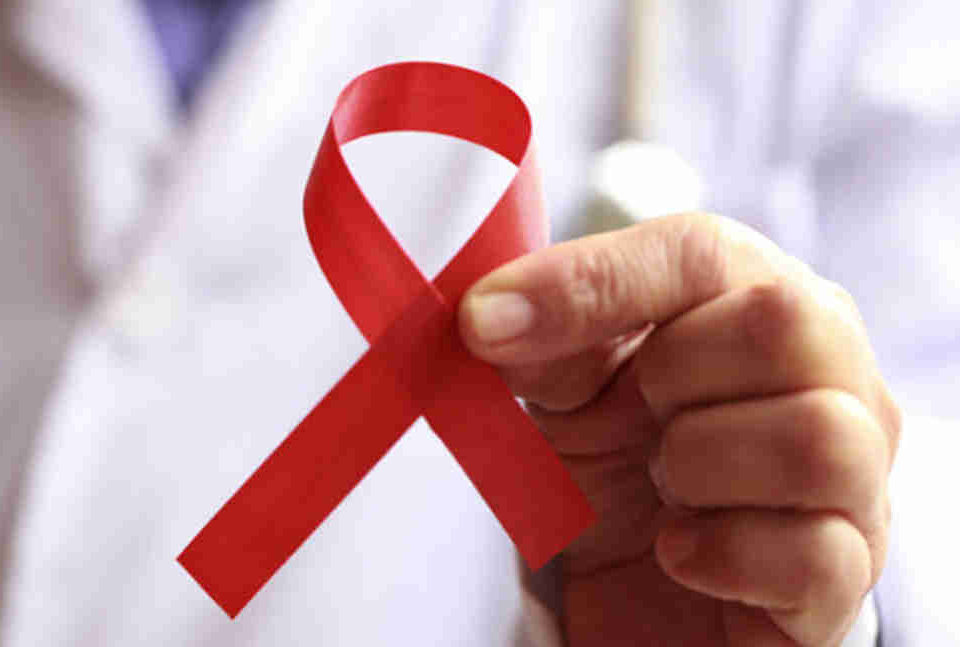- 如有疑问,请联系电邮
- customer@ihealth66.com
USNEWS:1型糖尿病饮食

USNEWS:老年人应该对视力丧失的问题有所了解
2019年3月5日
USNEWS:胰腺癌患者的存活率是多少?
2019年3月15日By Heidi Godman
当你患有1型糖尿病时,饮食是至关重要的。你摄入的碳水化合物量决定了你饭前摄入胰岛素的剂量。但是没有官方的1型糖尿病饮食可以遵循。相反,计算碳水化合物是控制你病情的关键。“对一个病人来说,这是一次很好的学习经历。一些人一生都在为之奋斗,”堪萨斯大学健康系统糖尿病研究所的医学教授、主任大卫·罗宾斯博士说。
胰岛素和碳水化合物
对于1型糖尿病,身体不再制造胰岛素,胰岛素是从消化后的碳水化合物(葡萄糖)中获取糖到细胞获取能量所必需的。
为了补偿,你必须为你摄入的每一种碳水化合物人工提供足够的胰岛素(通过注射或胰岛素泵)。这是在每顿饭之前完成的,当你计算出你要吃多少碳水化合物,并将它们与你的胰岛素剂量相匹配。
如果你没有足够的胰岛素,葡萄糖会在你的血液中堆积,这种情况称为高血糖或高血糖。这会使你面临昏迷甚至死亡等健康并发症的风险。
糖尿病患者的酮饮食
为什么不限制1型糖尿病饮食中的碳水化合物含量呢?
Betul Hatipoglu博士是克利夫兰诊所的内分泌学家,也是凯斯西储大学医学院的临床副教授,她说当1型糖尿病没有得到很好的控制时,她可能会建议监督碳水化合物限制,但不能达到真正的“酮原性饮食”。
一个酮饮食依赖于脂肪的大部分卡路里,迫使身体燃烧脂肪作为燃料。这些脂肪或酮类的废物会对患有1型糖尿病的人产生一种危险的状况,称为糖尿病酮症酸中毒。在家里监控这种风险并非易事。”哈蒂波格鲁说:“你可以检查尿液中的酮类化合物,但你不能判断它们是否存在,因为你正在节食,或者因为你即将患糖尿病酮酸中毒,这会危及生命。”
1型糖尿病食品
当涉及到1型糖尿病饮食时,有这么多的危险,你会想要倾向于健康、平衡的饮食,这有助于控制血糖水平。要做到这一点,就要关注在任何健康饮食计划中发现的营养丰富的超级食品。
您的1型糖尿病食物清单应包括:
- 蔬菜,如深色绿叶蔬菜(羽衣甘蓝、菠菜)、西红柿和南瓜。
- 水果,如浆果、香蕉和苹果。
- 豆类,如扁豆、黑豆和芸豆。
- 全麦,如全麦、藜麦和燕麦。
- 低脂乳制品,如酸奶和奶酪。
- 不饱和脂肪,如橄榄油和鳄梨。
- 蛋白质食品,如家禽、鱼和瘦肉。
在这个清单上的项目中,1型糖尿病饮食的超级食品是蔬菜、豆类和水果。它们含有纤维,需要更长的时间来消化,并防止血糖水平上升。“纤维减缓淀粉的吸收。如果你喝苹果汁,血糖就会上升。但是如果你吃苹果,血糖就低得多(因为它的纤维含量需要更长的时间来燃烧)”,罗宾斯解释说。
避免食物
1型糖尿病饮食中的危险食物是每个人都应该远离的不健康的东西。但不同的是,当你患有1型糖尿病时,更迫切地要跳过它们。这些危险食品包括:
- 精制谷物。饼干、白面包和甜甜圈等食物是简单的碳水化合物,能迅速分解,使血糖水平飙升。胰岛素注射不能总是控制这些峰值,这可能导致高血糖和增加1型糖尿病并发症的风险。”罗宾斯说:“我们知道,长期高血糖会显著增加患眼病、肾衰竭、中风甚至痴呆的风险。”
- 饱和脂肪。这些脂肪存在于诸如黄油和其他全脂乳制品、糕点、红肉和椰子油等食物中。1型糖尿病患者患心血管疾病和中风的风险增加。饱和脂肪会增加患这些疾病的风险。
- 咸的食物。炸薯条、泡菜、刺山柑、脆饼和薯条等垃圾食品、酱油和伍斯特沙司都非常咸。对一些人来说,盐会升高血压。盐也可以抵消血压药物的作用。
DIET IS CRUCIAL WHEN you have Type 1 diabetes. The amount of carbohydrates you consume determines the dose of insulin you take before a meal. But there is no official Type 1 diabetes diet to follow. Instead, counting carbs is the key to managing your condition. “It’s quite a learning experience for a patient. Some people struggle with it their whole lives,” says Dr. David Robbins, professor of medicine and director of the Diabetes Institute at the University of Kansas Health System.
Insulin and Carbs
With Type 1 diabetes, the body no longer makes the hormone insulin, which is necessary to get sugar from digested carbohydrates (glucose) to your cells for energy.
To compensate, you must artificially supply enough insulin (by injection or insulin pump) for every carb you consume. This is done before each meal, when you calculate how many carbs you’ll be eating and match them to your insulin dose.
If you don’t have enough insulin, glucose can build up in your bloodstream, a condition called high blood sugar or hyperglycemia. This could put you at risk for health complications such as coma and even death.
Keto Diet for Diabetics
Why not just limit the amount of carbs in a Type 1 diabetes diet?
Dr. Betul Hatipoglu, an endocrinologist at Cleveland Clinic and a clinical associate professor at Case Western Reserve School of Medicine, says she might recommend supervised carb restriction when Type 1 diabetes is not well-controlled – but not to the point of a true ketogenic diet.
A keto diet relies on fat for most calories, forcing the body to burn fat for fuel. The waste products of these fats, or ketones, can produce a dangerous condition in people with Type 1 diabetes called diabetic ketoacidosis. There’s not an easy way to monitor that risk at home. “You can check for ketones in the urine,” Hatipoglu says, “but you can’t tell if they’re there because you’re on the diet or because you’re about to have diabetic ketoacidosis, which is life-threatening.”
Food for Type 1 Diabetes
With so much at stake when it comes to a Type 1 diabetes diet, you’ll want to lean toward healthy, balanced meals that help keep blood glucose levels manageable. To do this, focus on the same nutrient-rich superfoods found in any healthy eating plan.
Your Type 1 diabetes food list should include:
- Vegetables such as dark leafy greens (kale, spinach), tomatoes and squash.
- Fruits such as berries, bananas and apples.
- Legumes such as lentils, black beans and kidney beans.
- Whole grains such as whole wheat, quinoa and oats.
- Low-fat dairy products such as yogurt and cheese.
- Unsaturated fats such as olive oil and avocados.
- Protein foods such as poultry, fish and lean meat.
Among the items on this list, the superfoods for a Type 1 diabetes diet are vegetables, legumes and fruits. They contain fiber, which takes longer to digest and keeps blood glucose levels from spiking. “Fiber slows the absorption of starch. If you drink apple juice, blood sugar goes way up. But if you eat an apple, blood sugar is much lower (because its fiber content takes longer to burn),” Robbins explains.
Foods to Avoid
Risky foods in a Type 1 diabetes diet are the unhealthy items everyone should stay away from. But the difference is there’s more urgency to skip them when you have Type 1 diabetes. These risky food groups include:
- Refined grains. Foods like cookies, white bread and donuts are simple carbohydrates that break down quickly and send blood glucose levels soaring. Insulin injections can’t always control such spikes, which may cause hyperglycemia and increase the risk for Type 1 diabetes complications. “We know that having high blood sugar over a long period of time markedly increases the risk for eye disease, kidney failure, stroke and perhaps dementia,” Robbins says.
- Saturated fats. These are found in foods such as butter and other whole fat dairy products, pastries, red meat and coconut oil. People with Type 1 diabetes have an increased risk for cardiovascular disease and stroke. Saturated fat contributes to the risk for those diseases.
- Salty food items. French fries, pickles, capers, junk foods like pretzels and chips, soy sauce and Worcestershire sauce are extremely salty. For some people, salt raises blood pressure. Salt can also negate the effects of blood pressure medication.
Drinks for Diabetics
Robbins advises limiting drinks for diabetics to nonsweetened beverages such as water, coffee or tea. Drinking sweetened beverages such as soda or juice can spike blood glucose levels.
Beer, wine and liquor can also be risky drinks for diabetics. “The problem with alcohol is that if it’s sweet it will raise blood sugar,” Robbins notes. He also points out that drinking too much alcohol can keep the liver from releasing its stores of glucose, which you may need if your blood sugar dips too low, which is a condition called hypoglycemia.
Robbins recommends a limit of no more than one drink per day for men and women who have Type 1 diabetes.
Eating Out
Sticking to a healthy Type 1 diabetes diet can be especially challenging when you’re dining out. Most restaurant food is rich in sugar, salt, saturated fat and calories.
Robbins recommends looking at menus in advance on a website or smartphone app. “You can see a comprehensive list of calories, carbohydrates and fat and know what you’re getting into when you go to a restaurant,” he points out. Large chain restaurants typically make complete nutrient analyses available, and many small restaurants post nutrition information as well.
Robbins also suggests that people with Type 1 diabetes speak up when eating out and ordering. “Be assertive and say, ‘This is how I want it to be cooked,'” he advises.
Example requests include:
- Asking for a meal to be made without butter or salt.
- Asking for fish or poultry to be broiled, not fried or sauteed in butter and oil.
Food Tips
People with Type 1 diabetes can also follow these food guidelines for the best results:
- Even healthy carbs have varying effects on blood sugar. You can find out how much certain carbs raise blood sugar by using the glycemic index, which ranks carbs on a scale of 1 to 100. The higher the GI number, the higher your blood sugar will rise. For example, foods with a low GI (55 or less) include oatmeal, sweet potatoes and legumes. Foods with a high GI (70 or higher) include russet potatoes, pineapples and bran flakes.
- Eat protein and fats before carbs. No matter which carbs you eat, there’s a better chance they’ll burn slower if you eat them after protein and fats, notes Dr. Lorena Alarcon-Casas Wright, an endocrinologist and assistant professor of medicine at the University of Washington. “Protein and fats are molecularly complex, so the stomach needs to work to break them down. If we eat protein and fats first, it’s like a cushion for carbs,” she says. For example, in a meal of broiled chicken, green beans and a few baked sweet potato slices, you’d eat the chicken first and then the vegetables and sweet potato.
- Seek out nutrition information at your doctor’s office. Diet and nutrition information continues to change as we learn more from research. “Even for patients who are sophisticated in their diabetes care,” she says, “it’s a good idea to get a refresher course. We always have new research and information to share.” Remember, too, that you can lean on your health care team if you’re feeling overwhelmed by the tall task of staying on top of a Type 1 diabetes diet. The team is there to support you. And diet isn’t simply a matter of what’s for dinner; it’s a crucial component of your care.





